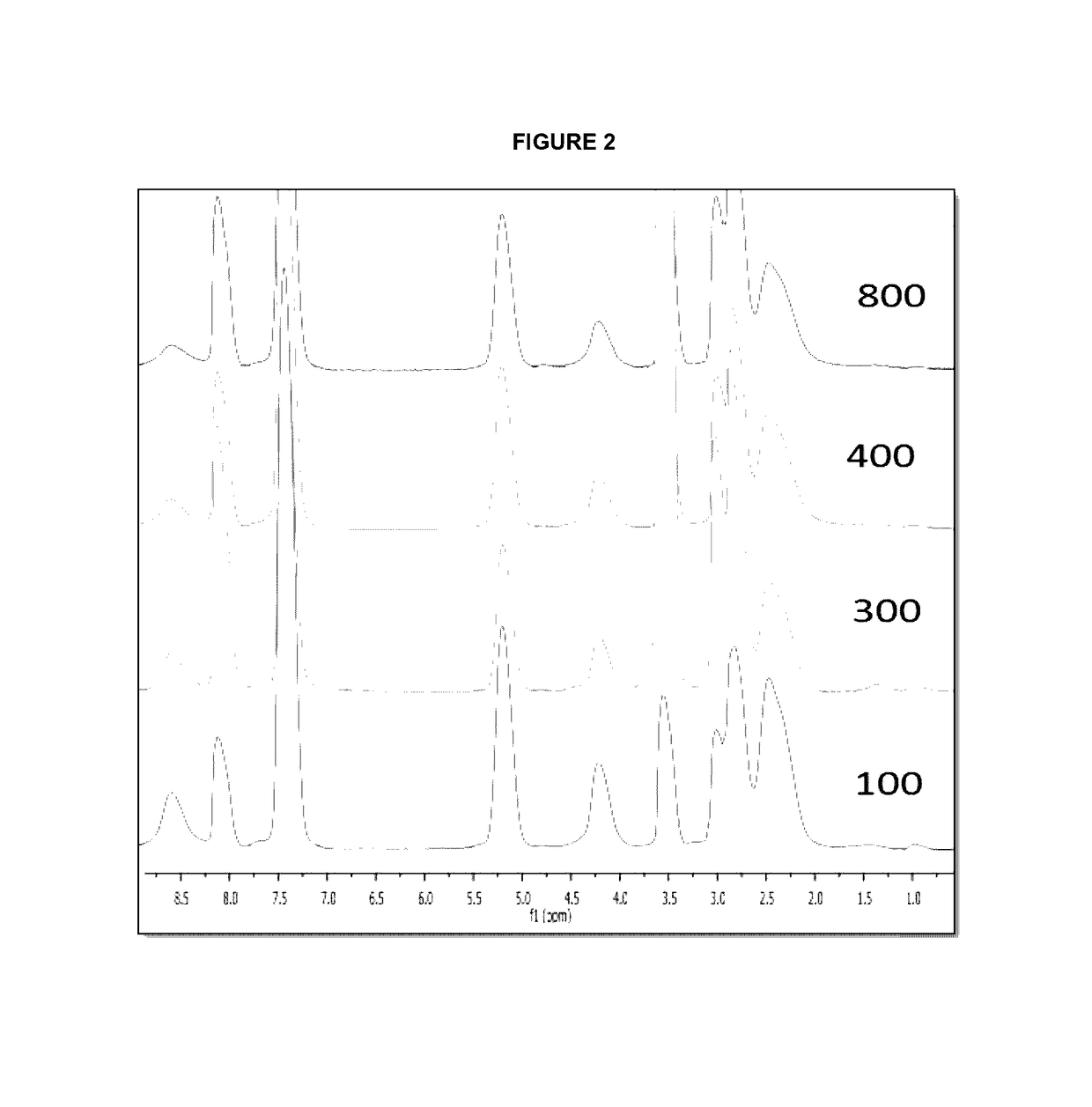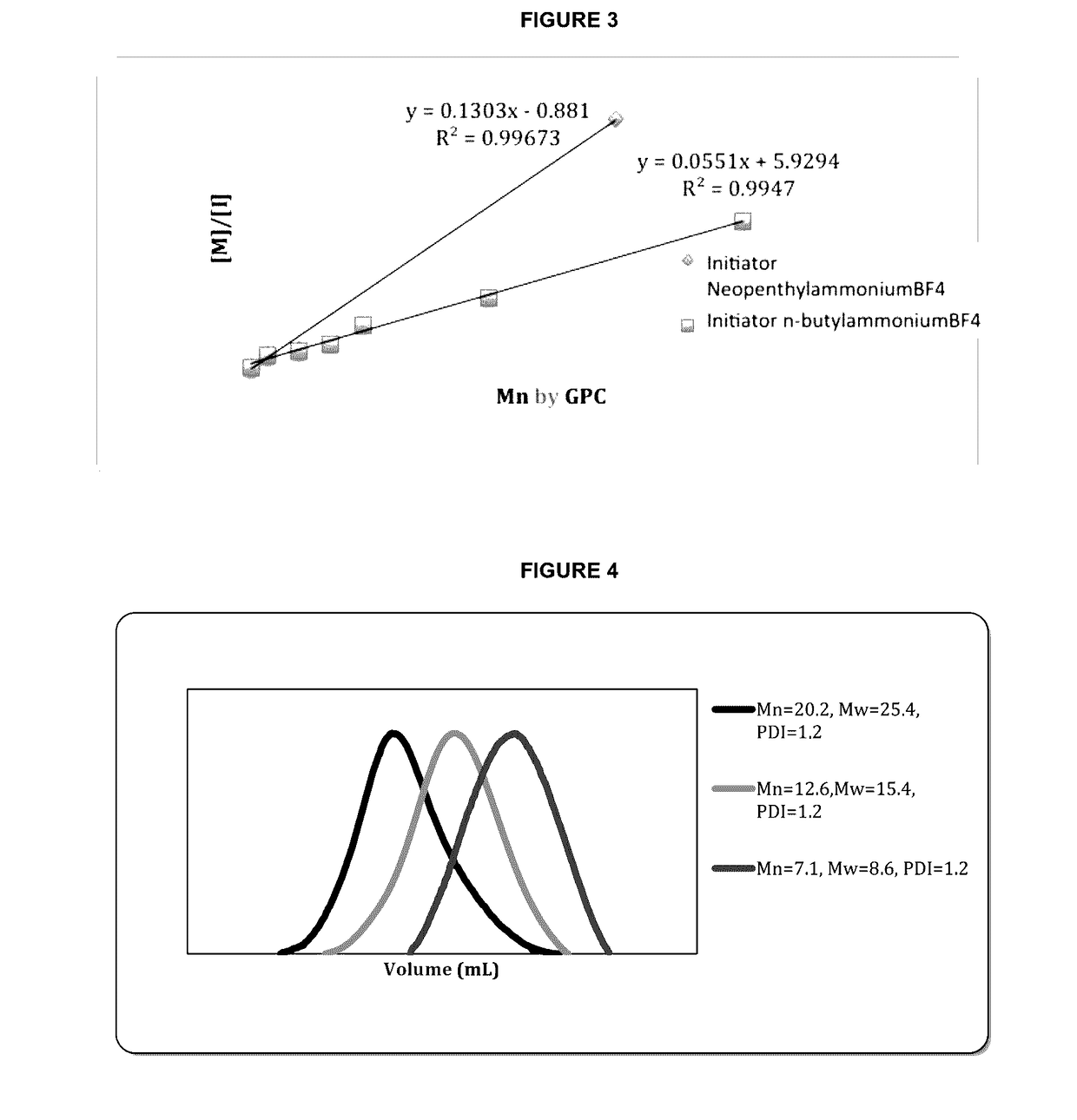Controlled synthesis of polyglutamates with low polydispersity and versatile architectures
a polyglutamate and polydispersity technology, applied in the field of controlled synthesis of polyglutamates with low polydispersity and versatile architectures, can solve the problems of special challenges for characterization, polymer specific challenges, and all synthetic polymers are inherently heterogeneous, and achieve the effects of reducing the polydispersity index (pdi) of polypeptides, enhancing the degree of polymerization (dp), and structural versatility
- Summary
- Abstract
- Description
- Claims
- Application Information
AI Technical Summary
Benefits of technology
Problems solved by technology
Method used
Image
Examples
Embodiment Construction
[0037]One aspect of the present invention relates to the provision of a new methodology for controlling the polymerization of O-amino acid N-carboxyanhydrides by the use of non-nucleophilic salts, such as, ammonium tetrafluoroborone salts, general method used as follows:
[0038][0039]wherein[0040]R represents alkyl, Defined C-terminal Attachment sites (Alkyne, azide, activated thiols, etc.), ethyleneglycol (EG) of different sizes including polyethylenglycol (PEG from Mw range 100 to 10000 g / mol)[0041]n represents number of repeating units of y-benzylglutamate in the polymer ranging from 1 to 1.000 units
[0042]The tetrafluoroborone ammonium salts can be easily prepared by the reaction of the corresponding amine with the HBF4 diethylether complex, purified and stored without detected decomposition or impurities.
[0043]Another aspect of the present invention relates to different di- or tri-blocks systems with adequate end-group functionality to allow further site-specific conjugation, a po...
PUM
| Property | Measurement | Unit |
|---|---|---|
| temperatures | aaaaa | aaaaa |
| PDI | aaaaa | aaaaa |
| temperatures | aaaaa | aaaaa |
Abstract
Description
Claims
Application Information
 Login to View More
Login to View More - R&D
- Intellectual Property
- Life Sciences
- Materials
- Tech Scout
- Unparalleled Data Quality
- Higher Quality Content
- 60% Fewer Hallucinations
Browse by: Latest US Patents, China's latest patents, Technical Efficacy Thesaurus, Application Domain, Technology Topic, Popular Technical Reports.
© 2025 PatSnap. All rights reserved.Legal|Privacy policy|Modern Slavery Act Transparency Statement|Sitemap|About US| Contact US: help@patsnap.com



